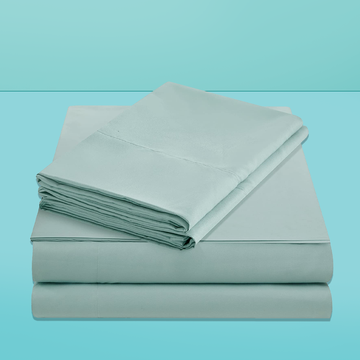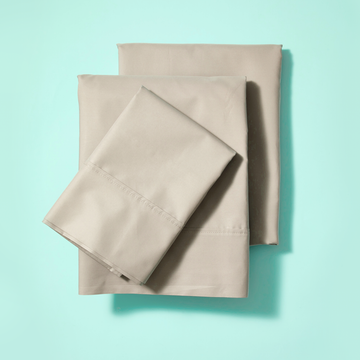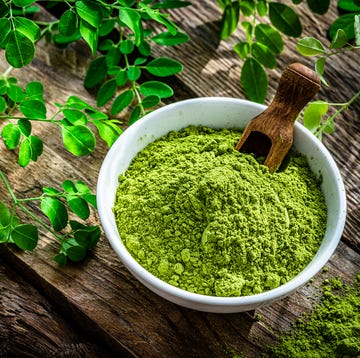Frozen shoulder is no joke. (Although the name sounds like one.) It comes on out of nowhere, for no apparent reason and it is painful. This isn’t that stiff muscle ache you get after working out, or the sore arm discomfort you feel after a flu shot. What I felt was an intensely sharp, stabbing sensation in my shoulder and upper arm when I reached forward that made me literally shriek in pain.
I had never heard of frozen shoulder until I experienced it, but if you ask any woman over the age of 45, she’ll probably know exactly what you’re talking about. That’s because frozen shoulder is a common occurrence during perimenopause, along with a multitude of other annoying and bizarre symptoms like hot flashes and brain fog.
Within a week, the crazy sharp pain would strike whenever I stretched my arm out in front of me, or lifted it up to reach for something, or moved it back to take off my coat. And don’t even get me started about hooking a bra. That became a total nonstarter. I finally had to fasten the closure when the bra was off, then step into it like a hula-hoop and pull it on.
What was going on?! Frozen shoulder.
What is frozen shoulder?
The medical term for this condition is adhesive capsulitis, and it happens when the shoulder capsule — the tissue surrounding the bones and that holds lubricating joint fluid— becomes inflamed and then contracts and tightens. This is what causes the pain and lack of mobility (ie: frozen). “It is a syndrome of inflammation, which can be triggered by the loss of estrogen during menopause,” says Vonda Wright, M.D., a double board-certified orthopedic surgeon in Orlando, FL. “Estrogen not only helps quell inflammation, but is also critical for maintaining muscle mass and bone density. With estrogen decreasing, the structural integrity of muscles and ligaments decreases as well, and this affects the bones and joints.
This is the musculoskeletal syndrome of menopause. Research suggests that over half of women going through menopause experience musculoskeletal symptoms, including frozen shoulder. Not to mention that we all gradually lose muscle mass as we age, and those changes start in your 30s. I had no time to lose.
How do you fix frozen shoulder?
While you may instinctually think resting your arm will help, that would be wrong. “Being sedentary only compounds the problem,” says Wright. “The thing to do when you first feel pain and stiffness is start moving.” She recommends starting with long, slow shoulder stretches and then using weights and resistance bands to strengthen the muscles around the shoulder and improve range of motion. Without any kind of PT intervention, it can take a full two years for the pain to diminish.
While I exercise regularly (speed walks, yoga classes), I never lifted weights. But as part of my home PT plan, I needed to learn a good upper body strength-training routine, so I enlisted the help of Wright as well as NYC-based, NASM-certified trainer Claudette Sariya to show me some key moves.
Sariya recommends 15 to 20 minutes of active stretching and mobility exercises 2 to 3 times a week. “If you don’t use it, then you lose it,” she says, “and strengthening those muscles will prevent frozen shoulder from returning. It also helps decrease inflammation and improve range of motion.”
Wright agrees: “Weight training and building muscle is a lifestyle. Your 40s is the critical decade to get your body strength together to carry you through your 50s, 60s, and beyond.”
The workout that defrosted my frozen shoulder.
I started with chest- and shoulder-opening yoga stretches, like downward facing dog and child’s pose. I also focused on body-weight exercises like holding a plank for as long as I could (at least 30 seconds). Next, I added resistance bands and dumbbells into the mix.
Here's exactly what I did:
Shoulder stretches
I did a stretching routine recommended by our Nutrition Lab director, Stefani Sassos, M.S., R.D.N., C.D.N., NASM-CPT, every day, and it made a huge difference — especially the cross-body shoulder stretch, the standing chest stretch, and the overhead triceps stretch. I also added these three, which were crucial. I do these stretches 3 times a week on both arms.
Weightlifting exercises
If you’re working out on your own (like me), it can be hard to know when to level up your weights. “If you can finish 3 sets of 12 to 15 breaths and feel like you can do more reps with proper form, then it’s time to increase your weight. You can start with 3-pound dumbbells and move to 5, then 7, then 10 pounds over time, depending on the exercise,” says Sariya. (I've progressed from 3-pound dumbbells to 7 pounds over a few months.)
Sariya taught me these strength- and resistance-training moves to rehab my shoulder.
Resistance band moves
Pro tip: Even simple shoulder and upper arm stretches can hurt like crazy at first if you have frozen shoulder. I followed Sariya’s advice: “Move mindfully and with intention, and when you feel pain, back off.”
I do all of these resistance band exercises from Dr. Wright 3 times a week:
The bottom line
I now think that my frozen shoulder gave me an opportunity to get stronger for the long run. As Demi Moore once said: “I believe everything happens for you, not to you.” Preach. After four months of diligently doing stretches, yoga, resistance band and dumbbell exercises, my frozen shoulder is a not-so-distant memory. My new upper body workout not only healed my shoulder but also improved my posture and toned my arms.
A win-win-win!
Stefani (she/her) is a registered dietitian, a NASM-certified personal trainer and the director of the Good Housekeeping Institute Nutrition and Fitness Lab, where she oversees all nutrition and fitness-related content, testing and evaluation. She holds a master’s degree in clinical nutrition from New York University, as well as advanced certifications as a Women's Fitness Specialist and a Behavior Change Specialist. Stefani is dedicated to providing readers with evidence-based content to encourage informed food choices and healthy living. She is an avid CrossFitter and a passionate home cook who loves spending time with her big fit Greek family.












